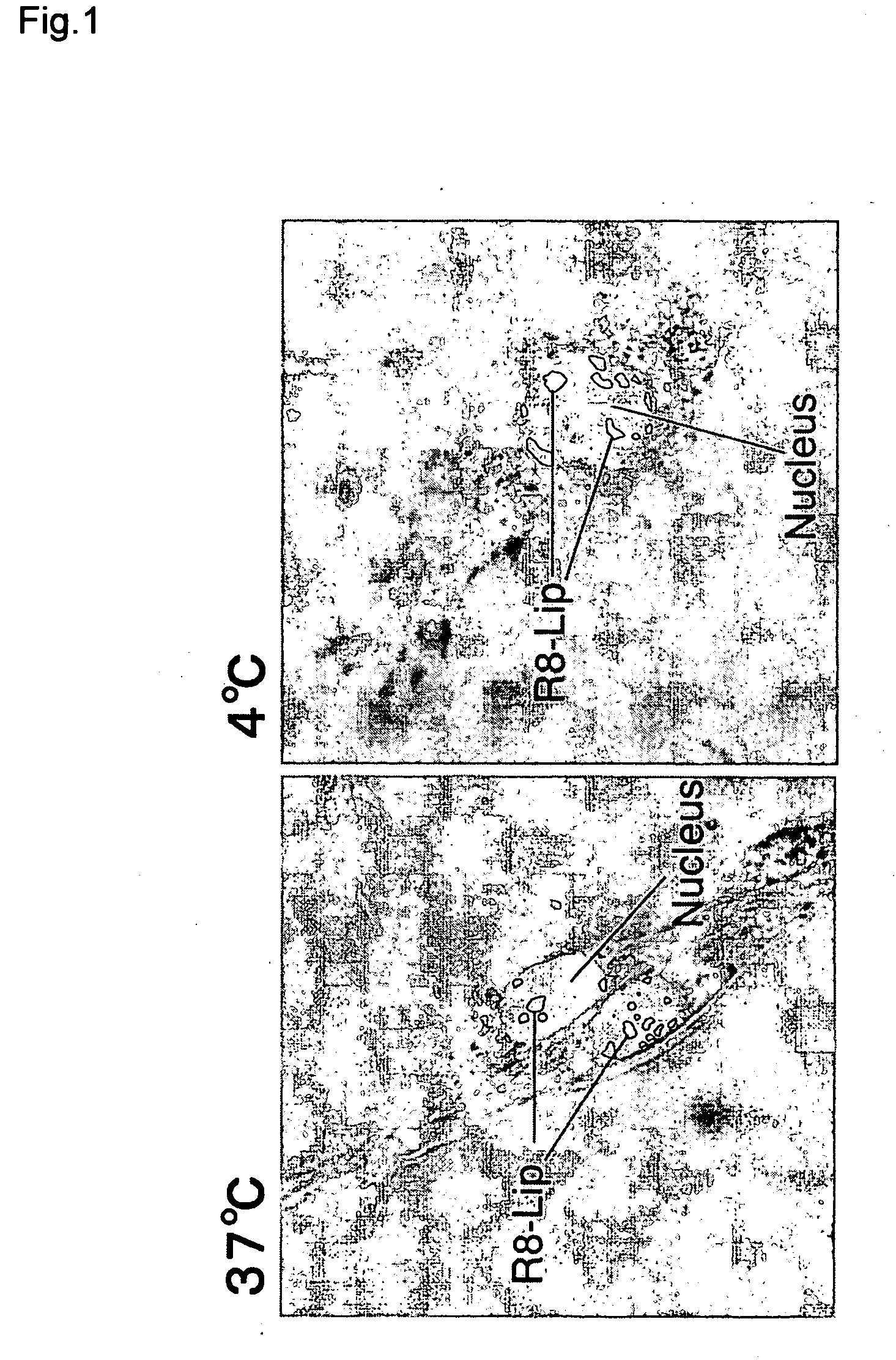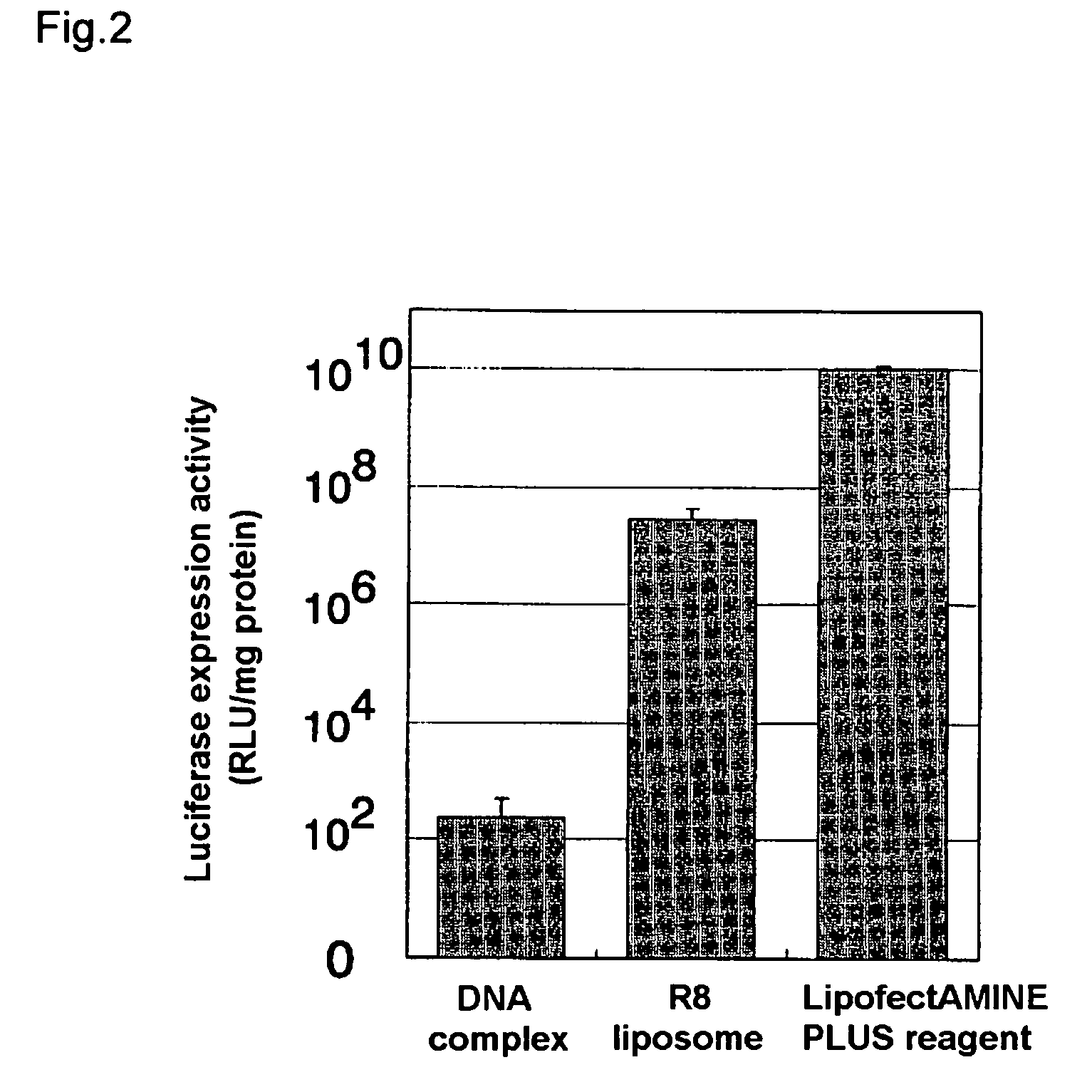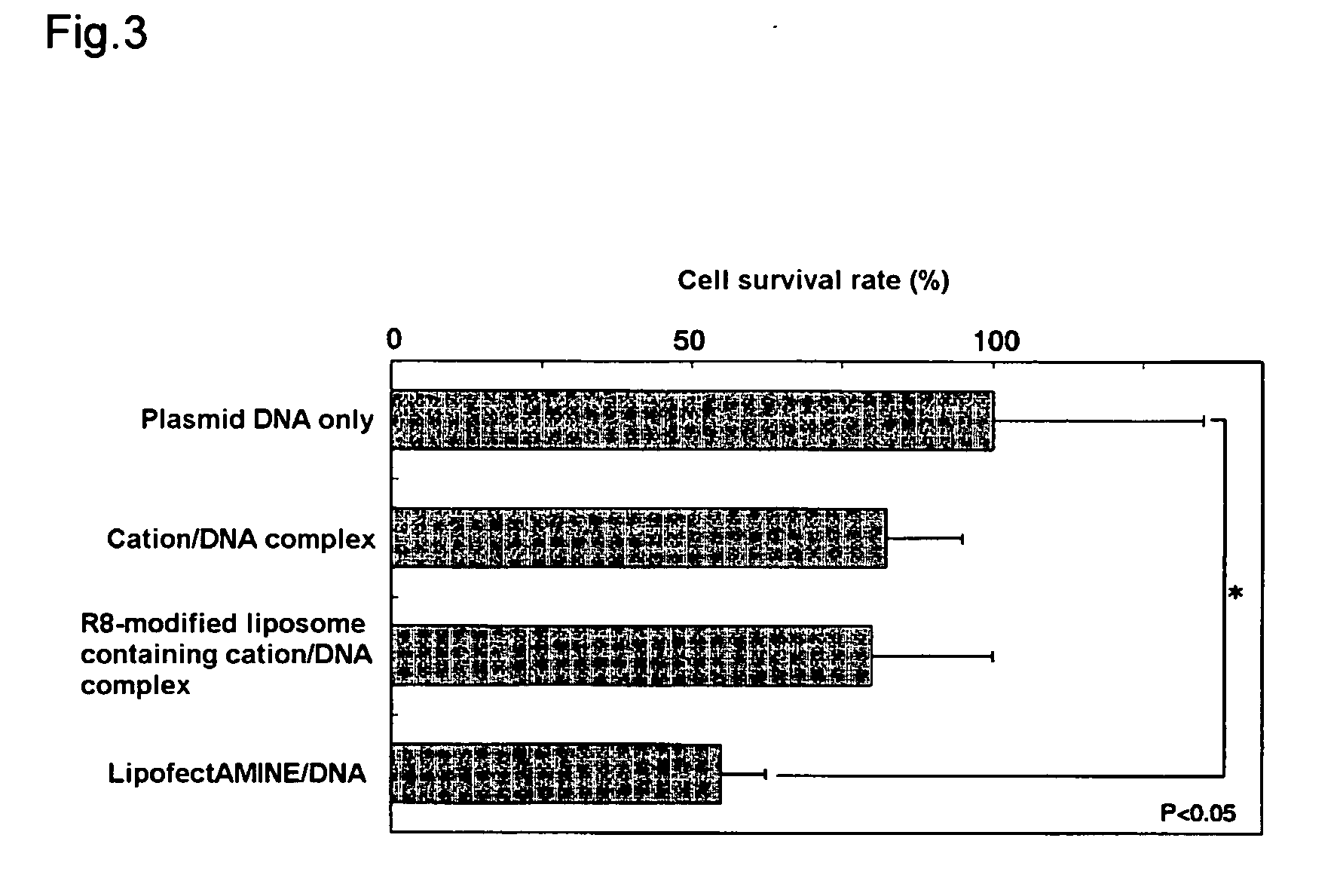Polyarginine-modified liposome having nuclear entry ability
- Summary
- Abstract
- Description
- Claims
- Application Information
AI Technical Summary
Benefits of technology
Problems solved by technology
Method used
Image
Examples
example 1
Preparation of Liposome with Cellular and Nuclear Entry Ability
[0064] A liposome having octaarginine on its surface was prepared by hydration as follows. 0.75 mg of stearylated octaarginine was dissolved in 9.0 mL of ethanol, while 5.02 mg of egg yolk phosphatidylcholine and 1.1 mg of cholesterol were dissolved in 21 mL of chloroform. The two solutions were mixed, and placed in a round-bottomed flask (final chloroform:ethanol ratio=7:3). The solvent was removed with a rotating evaporator, and the remainder was dried for 2 hours in a desiccator. The resulting lipid membrane (10 μmole) was hydrated in 1 mL of phosphate-buffered saline which had been warmed in advance to 50° C., and agitated for 5 seconds. The lipid dispersion was passed 11 times each through 400 nm, 200 nm and 100 nm polycarbonate membrane filters. In this way, a liposome was formed having octaarginine (5 mole % of total lipids) on its surface.
[0065] The liposome was fluorescent labeled by incorporating 1% rhodamine...
example 2
Gene Delivery Into Cells Using the Liposome
[0070] 8 μg of a plasmid with a total length of 8454 bp comprising the luciferase gene and a CMV promoter upstream therefrom (this plasmid was prepared by incorporating luciferase gene into PQBI plasmid having CMV promoter) and 16 μg of stearylated arginine were mixed by agitation in 10 mM HEPES buffer to prepare a complex of the aforementioned plasmid and stearylated arginine.
[0071] 125 μL of a solution obtained by dissolving 0.672 mg of dioleoylphosphatidylethanolamine and 0.096 mg of cholesterol succinic acid in 1 mL of chloroform was taken in a glass test tube, and nitrogen gas was blown thereon to evaporate it to dryness, forming a lipid membrane.
[0072] 250 μL liquid containing the aforementioned complex was added to the lipid membrane, and left 10 minutes at room temperature to hydrate the membrane. After hydration this was ultrasound treated for a few seconds in an ultrasound tank to prepare a liposome with the aforementioned comp...
example 3
Evaluation of Liposome Cytotoxicity
[0080] Cytotoxicity was compared and studied for (i), (ii) and (iii) in Example 2 by a cell survival assay (MTT assay) using formazan dye production by mitochondria in living cells.
[0081] Specifically, cell survival (%) was measured by MTT assay following 48 hours of thermostatic treatment at 37° C. under the same conditions as in Example 2-that is, with 4×104 NIH3T3 cells exposed to reagent equivalent to 0.4 μg DNA. As a control, cell survival (%) was measured in the same way when treatment was with the aforementioned plasmid alone.
[0082] The measurement results for cell survival (%) are shown in FIG. 3. As shown in FIG. 3, cell survival declined slightly in the case of the complex of the aforementioned plasmid with stearylated arginine (Example 2(i), “cation / DNA complex” in FIG. 3) and the liposome having the aforementioned complex entrapped therein and octaarginine introduced on the surface (Example 2(ii), “R8-modified liposome containing cat...
PUM
| Property | Measurement | Unit |
|---|---|---|
| Fraction | aaaaa | aaaaa |
| Molar ratio | aaaaa | aaaaa |
| Hydrophobicity | aaaaa | aaaaa |
Abstract
Description
Claims
Application Information
 Login to View More
Login to View More - R&D
- Intellectual Property
- Life Sciences
- Materials
- Tech Scout
- Unparalleled Data Quality
- Higher Quality Content
- 60% Fewer Hallucinations
Browse by: Latest US Patents, China's latest patents, Technical Efficacy Thesaurus, Application Domain, Technology Topic, Popular Technical Reports.
© 2025 PatSnap. All rights reserved.Legal|Privacy policy|Modern Slavery Act Transparency Statement|Sitemap|About US| Contact US: help@patsnap.com



